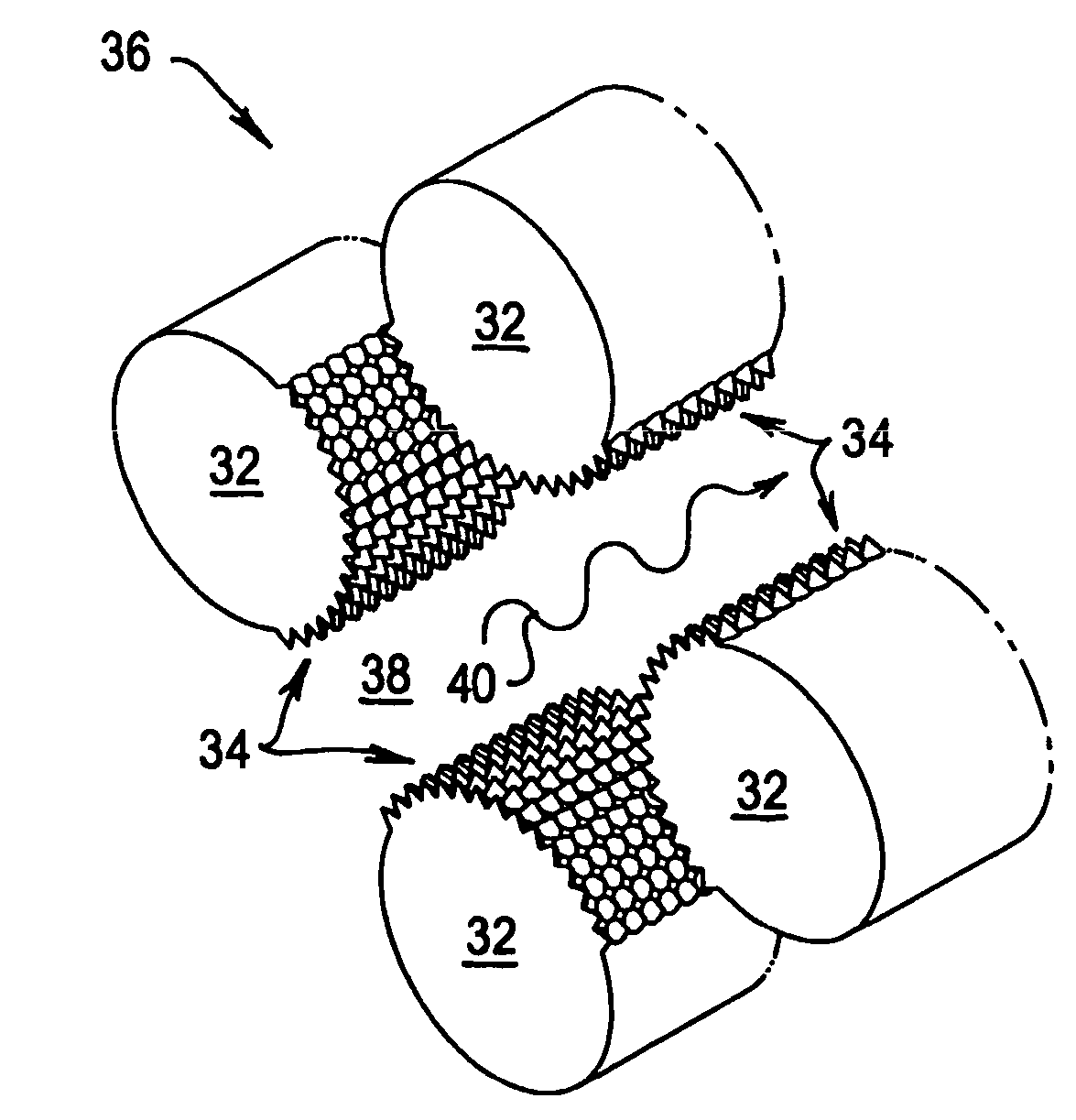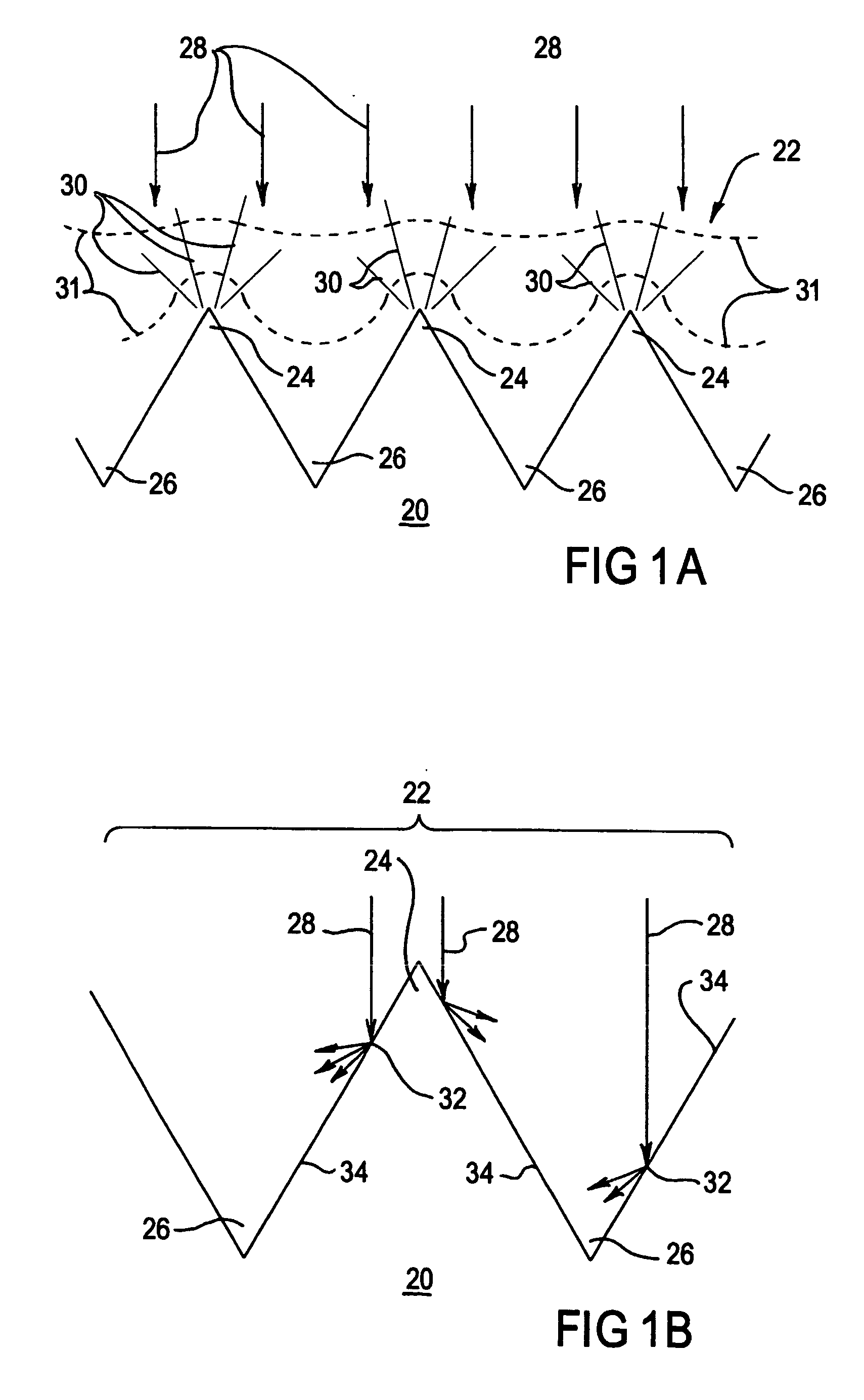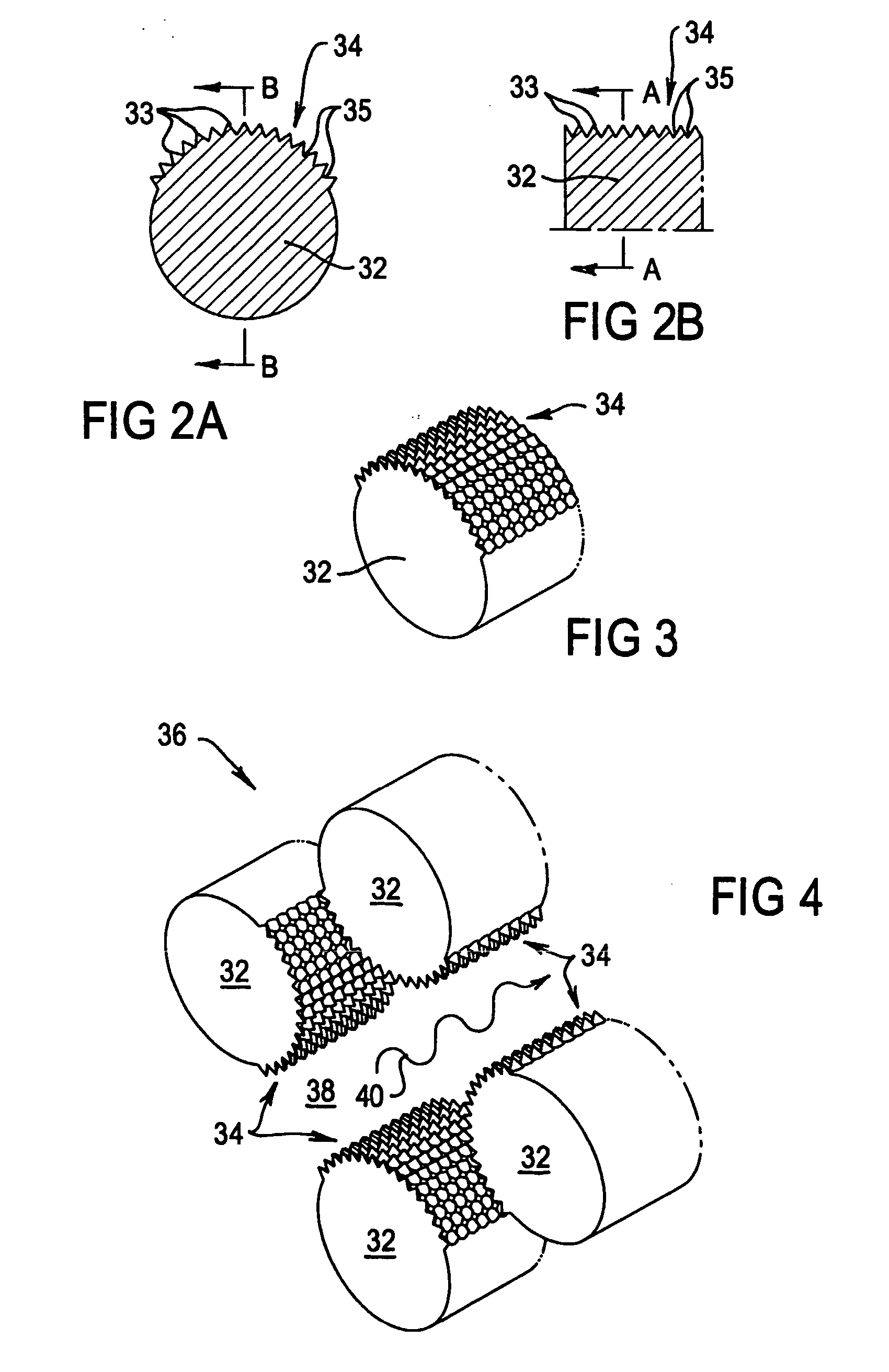Electrode for mass spectrometry
- Summary
- Abstract
- Description
- Claims
- Application Information
AI Technical Summary
Benefits of technology
Problems solved by technology
Method used
Image
Examples
Embodiment Construction
[0022] It is known that dielectric film when deposited on electrodes in a vacuum system of a mass spectrometer can cause build-up of electrical charges on the affected surfaces. This causes changes in the electrical fields around the electrode causing changes in the performance characteristics of the mass spectrometer. The present invention is based on the observation that film deposition is less likely to happen when the surface is not polished, but is rough. It is believed that when an electrode surface exposed to a flux of potentially contaminating particles consists of a combination of cavities and projections (which may be micro-cavities and micro-pinnacles), then that surface is in a favourable condition for dispersing initial deposits of contaminating film around the projections in such a way that at least the projections tend to stay relatively clean. As long as the projections are relatively clean, the electric field around the electrode remains stable and causes no change ...
PUM
 Login to View More
Login to View More Abstract
Description
Claims
Application Information
 Login to View More
Login to View More - R&D Engineer
- R&D Manager
- IP Professional
- Industry Leading Data Capabilities
- Powerful AI technology
- Patent DNA Extraction
Browse by: Latest US Patents, China's latest patents, Technical Efficacy Thesaurus, Application Domain, Technology Topic, Popular Technical Reports.
© 2024 PatSnap. All rights reserved.Legal|Privacy policy|Modern Slavery Act Transparency Statement|Sitemap|About US| Contact US: help@patsnap.com










